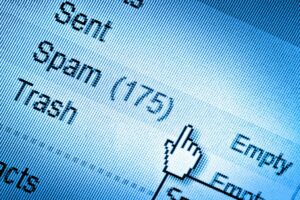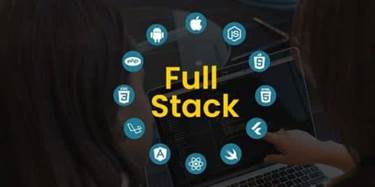The identities and accounts involved will include a mix of human and machine, and may also include employee, vendor, and/or customer identities. An aggregated identity data view is necessary https://www.globalcloudteam.com/ to understanding what identities exist and how they are being used. This helps you assess baseline risk and measure security improvement as you apply policies and enhances controls.

KEY TAKEAWAYS— A digital identity is a collection of unique attributes and properties that describes your identity in the virtual sphere. While FedNow will have a significant impact on the global payments system of money transfers among bank accounts throughout the world, it will take years for the platform to be fully tested and adopted by financial institutions. Financial institutions participating in FedNow can opt into different services within the system; they might, for example, elect to send funds back and forth across financial institutions, or choose to receive funds only.
Weak or Limited Number of Passwords
The proliferation of data, systems, tools and procedures of today, coupled with digital transformation and the accelerated use of cloud services, are pushing often-manual legacy processes beyond their limits. Another problem is legacy digital identity software from the early 2000s. By providing advanced technology and solutions, these companies enhance security measures, facilitating the growth of digital identity verification. However, regardless of how much identity will be digitized, one aspect that probably will have to remain tied to the physical domain is the backup-mechanism for DLT based digital identities. If a device containing a self-sovereign identity gets lost, stolen, or broken, or if the user forgets its access key, there must be a way to restore agency over such elemental information. Many options currently discussed circle around the use of biometrics to generate and potentially restore access to digital wallets, or identity hubs.

Digital rhetoric explores how identities are formed, negotiated, influenced, or challenged within the ever-evolving digital environments. Furthermore, it is important to recognize that physical and digital identities are intertwined, and the visual elements in online spaces shape the representation of one’s physical identity. As Bay suggests, ‘what we do online now requires more continuity—or at least fluidity—between our online and offline selves’.
What are the Different Types of Digital Identity?
It encompasses a person’s compiled information and plays a crucial role in automating access to computer-based services, verifying identity online, and enabling computers to mediate relationships between entities. Digital identity is an aspect of a person’s social identity and can also be referred to as online identity. Thus, a user should be the only person able to access all of their data from different cloud providers, and should be able to exploit cloud resources for a variety of operations without, for example, interfering with another user’s data. Moreover, users need to know that the personal information provided to the cloud during authentication will not be retransmitted to other cloud providers without their explicit consent. In this chapter, we will provide a detailed discussion of the different methods used to manage digital identity in the context of cloud computing. More and more people and organizations are facing the same problems when it comes to digital identities.

DIACC will also oversee the Voila Verified Trustmark Program which will provide verification of compliance standards, specifically ISO standards, as a way to certify Digital ID service providers against the Pan-Canadian Trust Framework. As of 2023, there isn’t a nationwide Digital ID program however the province of Alberta supports its own unique version of a Digital ID. Ontario and Quebec have plans to launch their Digital ID but were delayed by the Covid-19 Pandemic. Uniform Resource Identifier and the internationalized version Internationalized Resource Identifier are the standard for identifiers for websites on the World Wide Web. OpenID and Light-weight Identity are two web authentication protocols that use standard HTTP URIs . A Uniform Resource Name is a persistent, location-independent identifier assigned within the defined namespace. Omnidirectional identifiers are public and easily discoverable, whereas unidirectional identifiers are intended to be private and used only in the context of a specific identity relationship.
What is digital identity?
While Blockchain and other DLTs (e.g., Ethereum, Hyperledger Indy, Veres One, IOTA) enable new paradigms of identity management , we strive to develop an initial categorization of digital identity schemes. In a simplified manner, the naturalist worldview assumes that everything that resides inside the physical body or is more permanently connected with it forms its identity. It is thus the nature of the physical body and its delineation from other physical bodies that make it unique and distinguishable. From a metaphysical perspective, every physical object has unique properties, be it the position in space, its texture etc.
- Mehdi is a content writer with great experience in the blockchain sector, in addition to writing breaking news, he is also in charge of making guides, tutorials and reviews of the different projects.
- If criminals find access to the application’s server, they can find your data with not that much of a hurdle.
- Snapchat announces Creator Marketplace, a chance for businesses to partner with the growing creator community at Snapchat.
- This has already quite profound consequences for digital identity and corresponding problems in data protection, particularly when considering the use of biometric data for identification purposes (Jasserand, 2018, p. 155).
- Also, strict policies against money laundering mean that some services, such as money transfers need a stricter level of validation of digital identity.
This aspect connects to the discussion on “data ownership” which is another topic of utmost importance for the future of cyberspace and its governance as it takes more and more control of physical infrastructure. It seems much more complicated than the common discourse suggests, because data about one person can also be data blockchain identity management about another person. The information that X is friends with Y is a ready example of this conundrum as to who owns that information. The crucial question is to what extent an extreme position of constructivist identity is feasible. After all, such a stance would be in an uneasy relationship with the principle of uniqueness.
Constructivist Identity
Blockchain with multiple services like DLT and smart contracts can help stakeholders solve lots of challenges. It gives the user full control of data and is prone to threats like hack and breaches. As you can see, digital identity is an integrated part of our life nowadays.

Another important disclaimer is that this paper does not treat digital identity as belonging to DLT exclusively. Hence other, more centralized systems will also be discussed in their own right. We acknowledge that major strides toward digital identity are currently being undertaken by the DLT community.
How is “identity” used differently in the digital world?
It helps us sign-up for services more comfortably and moves the burden of providing credentials for every website/application. Owing your private keys equals owning your identity, and Ledger devices are here to make that as secure and easy as possible. Your digital identity is a digital version of your “physical identity.” And just like your physical one, you should protect it from bad actors. In short, ownership of metaverse objects via the blockchain bridges the gap between real and virtual worlds.
In this post, we will further define what digital identities are, use cases, identity attack vectors and threats, best practices for safeguarding identities, as well as the major disciplines concerned with identity security. If you have questions about the certification process not answered by the trust framework certification guidance, please send an email to digitalidentity- As the certification process for the trust framework is modular, a provider’s services can be certified against other standards on top of the trust framework as part of an overlay scheme. Unlike with a physical document, you are able to limit the amount of information you share to only what is really necessary.
Digital rhetoric[importance?]
Examples include a government electoral roll, or a land registry system, but also the relationship with private actors such as a bank. Necessity to improve process management and information security to protect against cybercrime and identity theft. Government services are often inefficient and difficult to access, especially in developing countries. Digital ID systems can help streamline government processes and make it easier for citizens to access public services. When data is transmitted between devices, a digital ID can be used to verify the identity of the sender and receiver. It can help to ensure the security and privacy of data and devices and enable new capabilities such as device tracking and management.


